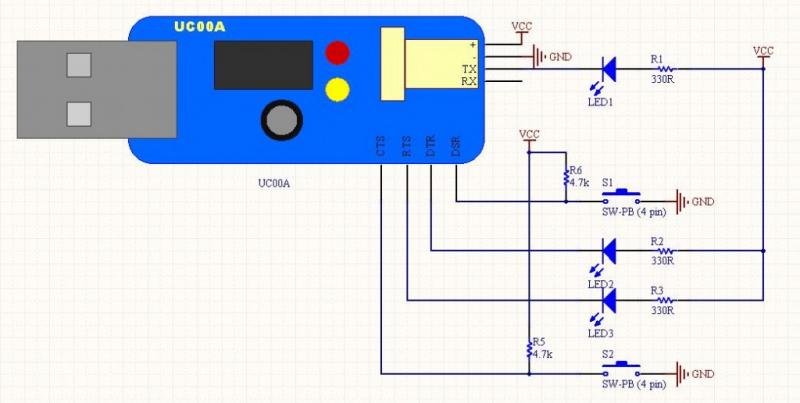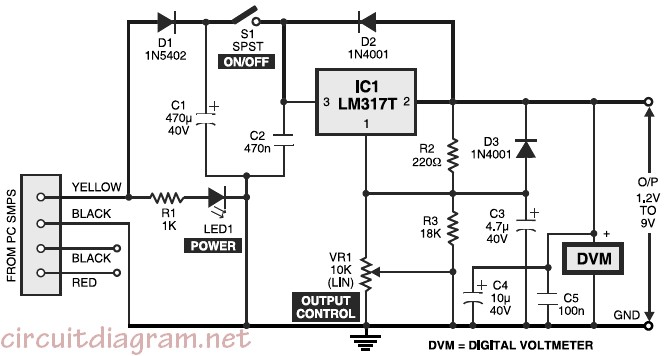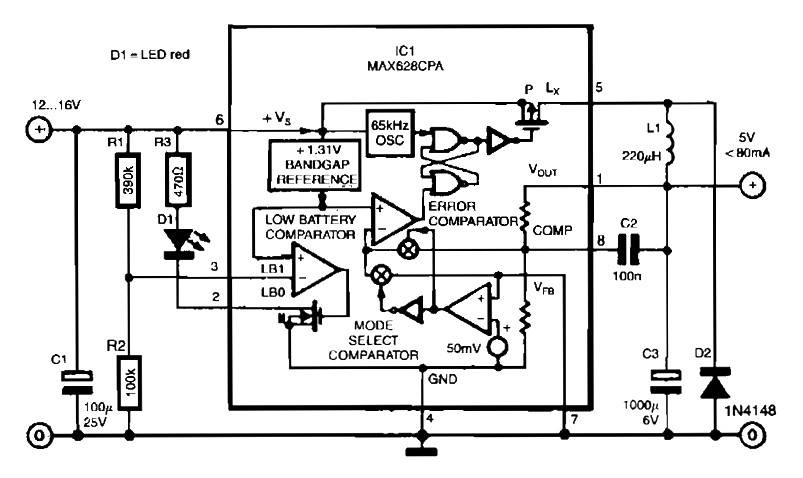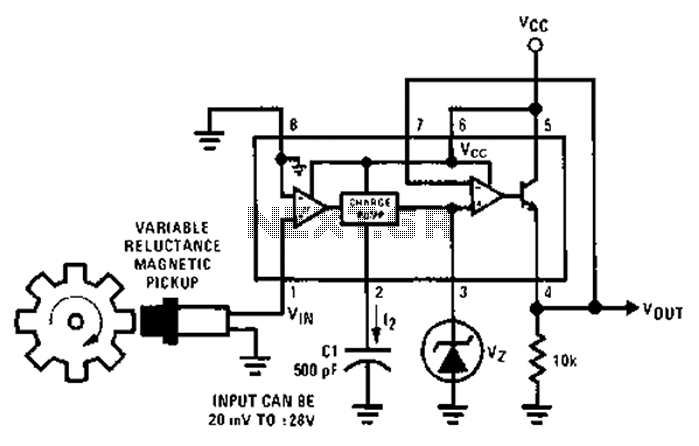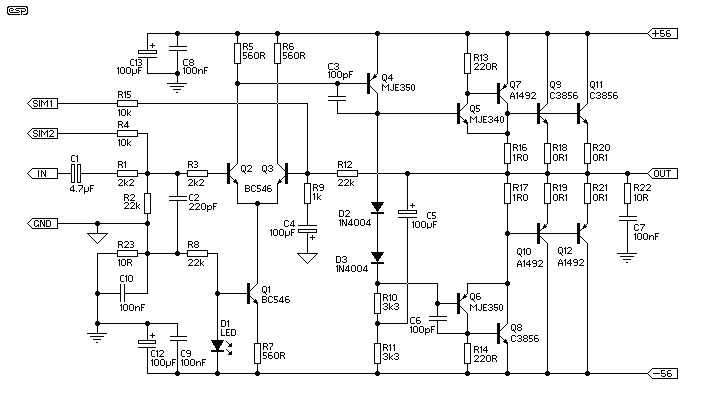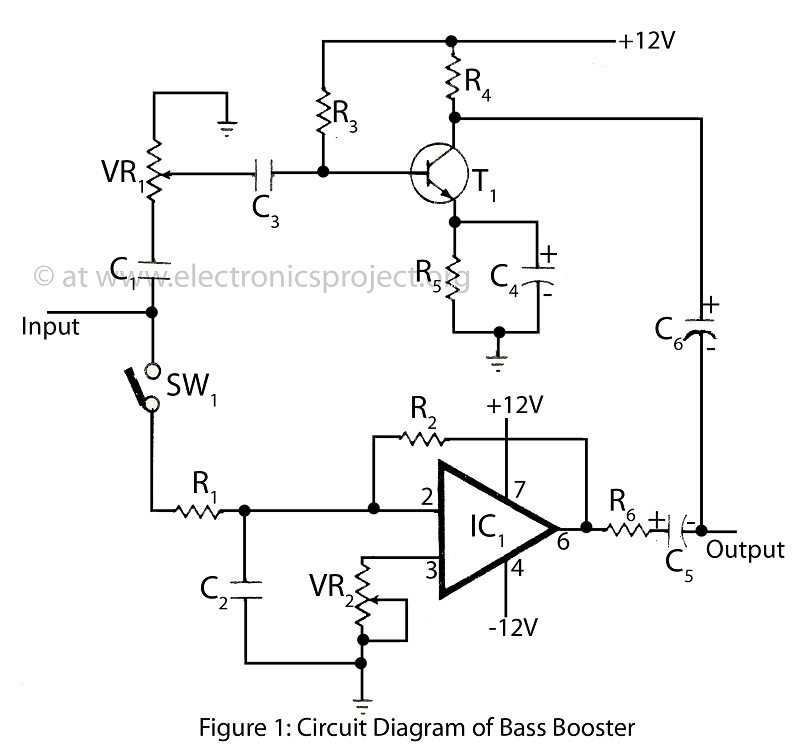
Universal Power Supply Circuit
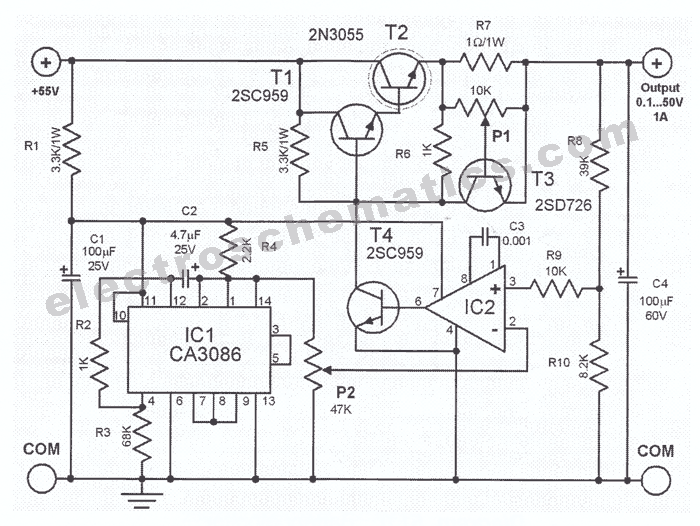
This universal power supply includes a bridge rectifier, a voltage stabilizer (78xx), and a PNP power transistor. This combination allows for a load current output.
The universal power supply circuit is designed to convert alternating current (AC) from the mains into a stable direct current (DC) output suitable for various electronic applications. The bridge rectifier serves as the initial component, consisting of four diodes arranged in a configuration that allows both halves of the AC waveform to be utilized, effectively converting AC to pulsating DC.
The voltage stabilizer, typically represented by the 78xx series, is a linear voltage regulator that maintains a constant output voltage despite variations in input voltage or load conditions. The "xx" in the designation indicates the specific output voltage, which can range from 5V to 24V depending on the model used. The stabilizer's output is connected to the load, ensuring that sensitive electronic components receive a consistent voltage level.
The inclusion of a PNP power transistor in this circuit enhances its current handling capabilities. This transistor acts as a switch or amplifier, allowing for increased load current without overheating or causing voltage drops. When combined with the voltage regulator, the PNP transistor provides additional stability and current support, making the power supply suitable for driving higher power devices.
Overall, this universal power supply design is versatile and can be adapted for various applications, including powering microcontrollers, sensors, and other electronic circuits that require a reliable and stable power source. Proper heat sinking and component selection are critical to ensure efficient operation and longevity of the power supply system.This universal power supply contains, beside the bridge rectifier, a voltage stabilizer (78xx) and a pnp power transistor. This combination allow a load cu.. 🔗 External reference
The universal power supply circuit is designed to convert alternating current (AC) from the mains into a stable direct current (DC) output suitable for various electronic applications. The bridge rectifier serves as the initial component, consisting of four diodes arranged in a configuration that allows both halves of the AC waveform to be utilized, effectively converting AC to pulsating DC.
The voltage stabilizer, typically represented by the 78xx series, is a linear voltage regulator that maintains a constant output voltage despite variations in input voltage or load conditions. The "xx" in the designation indicates the specific output voltage, which can range from 5V to 24V depending on the model used. The stabilizer's output is connected to the load, ensuring that sensitive electronic components receive a consistent voltage level.
The inclusion of a PNP power transistor in this circuit enhances its current handling capabilities. This transistor acts as a switch or amplifier, allowing for increased load current without overheating or causing voltage drops. When combined with the voltage regulator, the PNP transistor provides additional stability and current support, making the power supply suitable for driving higher power devices.
Overall, this universal power supply design is versatile and can be adapted for various applications, including powering microcontrollers, sensors, and other electronic circuits that require a reliable and stable power source. Proper heat sinking and component selection are critical to ensure efficient operation and longevity of the power supply system.This universal power supply contains, beside the bridge rectifier, a voltage stabilizer (78xx) and a pnp power transistor. This combination allow a load cu.. 🔗 External reference
Warning: include(partials/cookie-banner.php): Failed to open stream: Permission denied in /var/www/html/nextgr/view-circuit.php on line 713
Warning: include(): Failed opening 'partials/cookie-banner.php' for inclusion (include_path='.:/usr/share/php') in /var/www/html/nextgr/view-circuit.php on line 713
